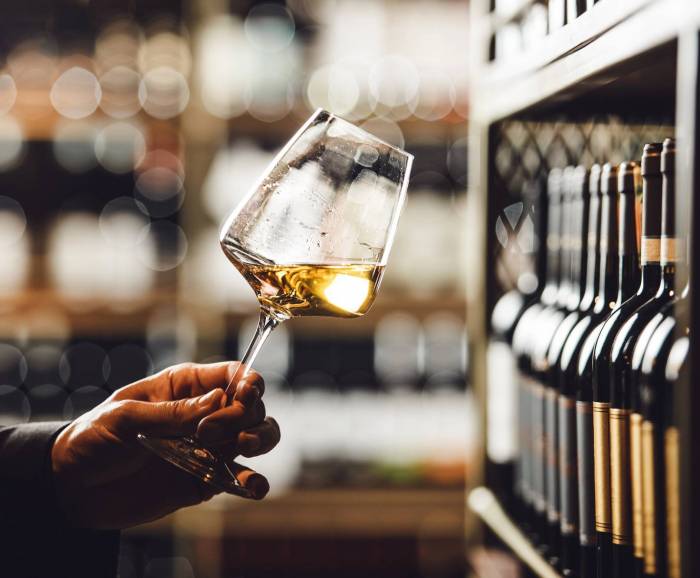White wines offer a spectrum of styles shaped by grape variety, winemaking, and balance of sweetness and acidity
Production methods, aromatic profiles, and aging techniques create diverse flavors and textures across still, sparkling, and fortified white wines

White wines are among the most diverse categories in the world of wine, offering a wide range of styles, flavors, and textures. This diversity is the result of differences in grape varieties, winemaking techniques, and the balance between sweetness and acidity. White wines can be bone-dry or lusciously sweet, still or sparkling, and even fortified with spirits. Each method and choice in production adds nuance to the final product.
The appearance of white wine often gives clues about its style. Most young white wines are pale straw or lemon in color, but some can be deep gold or amber. The color can be influenced by production choices such as extended skin contact or oxidation during aging. Unlike red wines, which get their color and tannin from prolonged skin contact, white wines are usually fermented off the skins. This results in a lighter color and lower tannin content, giving white wines a smoother texture.
Acidity is a defining feature of most white wines. They generally have higher acidity than reds, which gives them a crisp and refreshing quality. The level of acidity, combined with any residual sugar, determines whether a wine tastes bone-dry and zesty or soft and sweet. The aromatic intensity of white wines also varies greatly. Some are highly aromatic with pronounced scents of flowers, citrus, or spices due to grape varietal compounds and fermentation methods. Others are more neutral or delicate on the nose.
Winemakers use different techniques to shape the aroma and flavor profile of white wines. Fermenting in inert tanks at cool temperatures helps retain varietal fragrance, while aging in oak barrels can add notes of vanilla, toast, or nuts. Some white wines undergo malolactic fermentation, which converts sharp malic acid to softer lactic acid and imparts buttery flavors and a rounder mouthfeel. Aging on lees (spent yeast cells) can increase texture and add notes of bread dough or nuttiness.
White wines can be classified by production method: still (non-effervescent), sparkling (with bubbles), or fortified (with added spirit). Still white wines make up the largest category and include everything from light and delicate to rich and opulent styles. Sparkling whites are made by secondary fermentation to create bubbles; their flavor profiles depend on winemaking choices such as aging on yeast lees. Fortified whites have added alcohol for stability and longevity; they range from dry to very sweet and can develop complex nutty or savory aromas if aged oxidatively.
Another way to classify white wines is by sensory style: body (light, medium, full), sweetness (dry to sweet), aromatic profile (aromatic vs neutral), and oak influence (oaked vs unoaked). Light-bodied whites feel delicate and refreshing; full-bodied whites are richer due to higher alcohol, sugar content, oak aging, or malolactic fermentation. Sweetness is determined by residual sugar left after fermentation: dry whites have little to no sugar; off-dry have a hint; medium-sweet are clearly sweet but balanced by acidity; sweet whites are lusciously rich with high sugar content.
Aromatic whites display intense floral or fruity aromas due to grape-derived compounds; neutral whites have milder scents emphasizing minerality or subtle fruit. Oak aging imparts flavors like vanilla or toast and adds body; unoaked whites preserve pure fruit aromas.
The perception of sweetness in white wine depends not only on sugar content but also on acidity, alcohol level, aromatics, and serving temperature. High acidity can mask sweetness; alcohol adds body and a touch of perceived sweetness; strong fruit aromas can give an impression of sweetness even in dry wines.
White wines fall into four major groups based on sweetness: dry (up to 4 g/L residual sugar), medium-dry/off-dry (4–12 g/L), medium-sweet (12–45 g/L), and sweet/dessert (>45 g/L). Dry whites are crisp with no obvious sweetness; medium-dry have a gentle hint that softens acidity; medium-sweet taste clearly sweet but remain balanced by acidity; sweet whites are rich and viscous with intense flavors often from botrytized or late-harvest grapes.
Sparkling white wines use their own scale for sweetness—Brut being dry, Demi-Sec medium-sweet, Doux fully sweet—though most sparkling whites fall into the dry to off-dry range.
The balance between sugar and acid is crucial for all styles: high acid keeps even very sweet wines lively rather than cloying. Phenolics from grape skins or oak can add bitterness that reduces perceived sweetness.
White wine styles span from bone-dry to intensely sweet, each defined by specific production methods, grape choices, levels of residual sugar and acidity, aromatic intensity, oak influence, and other winemaking decisions. This broad spectrum allows for a wide variety of drinking experiences—from crisp aperitifs to rich dessert pairings—and makes white wine one of the most versatile categories for both consumers and professionals in gastronomy and tourism.
Founded in 2007, Vinetur® is a registered trademark of VGSC S.L. with a long history in the wine industry.
VGSC, S.L. with VAT number B70255591 is a spanish company legally registered in the Commercial Register of the city of Santiago de Compostela, with registration number: Bulletin 181, Reference 356049 in Volume 13, Page 107, Section 6, Sheet 45028, Entry 2.
Email: [email protected]
Headquarters and offices located in Vilagarcia de Arousa, Spain.